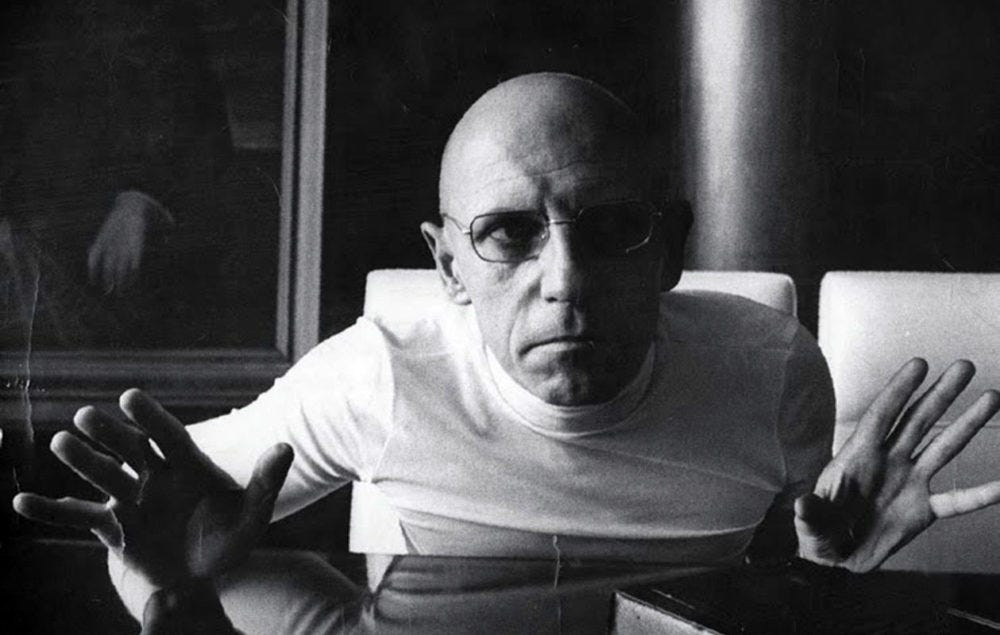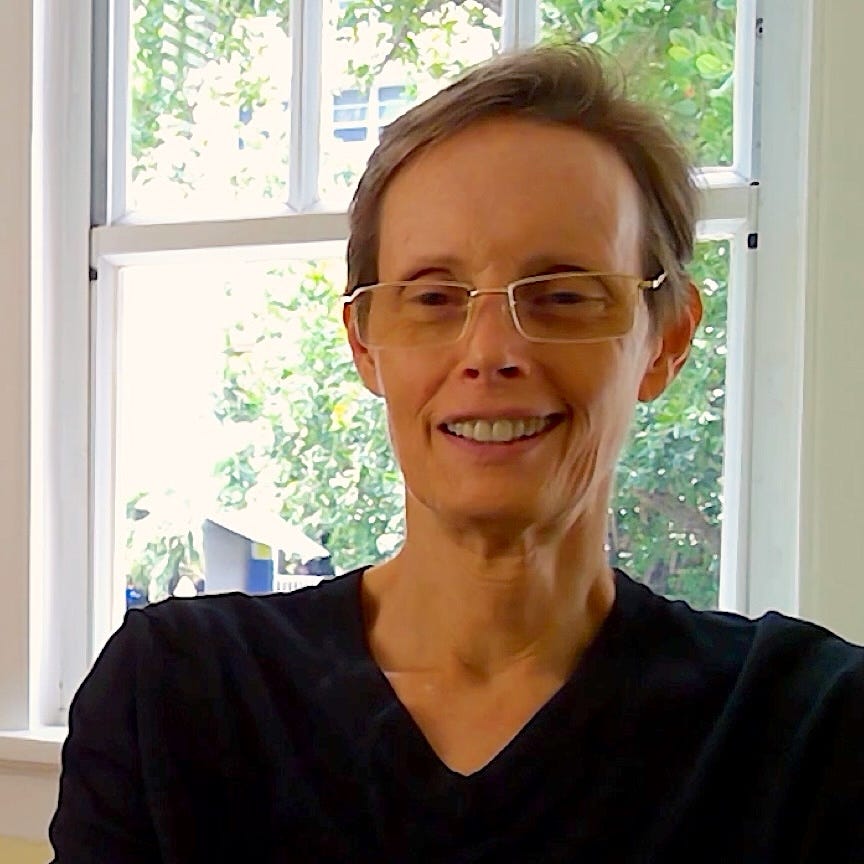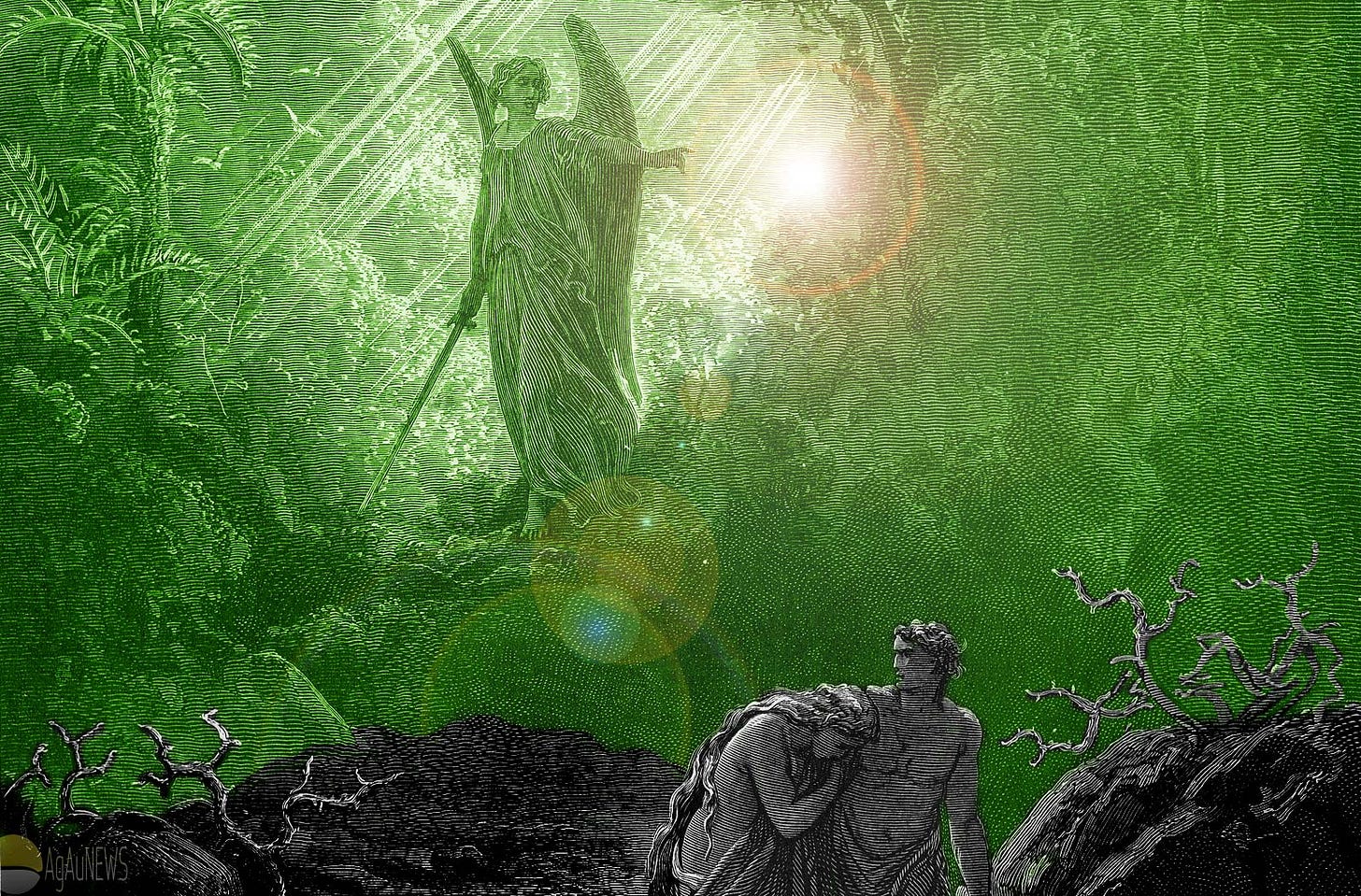[This is the sixth stage in a journey with gender from her conception, through her flourishing and decline, to her present time of demented senility - although hope is not lost in this age of regenerative medicine. The earlier parts are archived here]
“Structuralism was born in the Geneva of the linguist de Saussure, came to France with the anthropologist Levi-Strauss, and went on to inform the literary criticism of Barthes, the psychiatry of Lacan, and the Marxism of Althusser. It may be said to have culminated with Foucault and to have transcended itself, shooting off into outer intellectual space, with Derrida.”
The Rt. Hon. Lord Quinton[1]
Decades of Decadence
The idea of gender as the external expression of sexuality[2] was described in academic literature by psychologist Isaac Bentley[3] in the 1940s. In the fifties, paternally-abused fraud bully and pervert John Money abstracted this idea from its roots in biology and reality[4]. Robert Stoller pursued gender in the sixties as the self-perception of which sex one is, and his concept of sexual psycho-identity was also reified without respect to biological constitution.
Money and Stoller’s perspectives charmed intelligentsia, kings and plebeians alike to believe, for one, that a little boy could become a girl, and that a man who feels like a woman needs social medical and legal affirmation of his delusion. Here was forming a T[5] rib that was contra-sexual, called trans-sexual and became an initially unramified trans-gender, in a then nebulous umbrella. Reconceptualisation of sex. Tea-time.
Another outcome of these psychologists’ fantasies was that iatric disorder became non-diagnosable in aberrant libidinal attraction[6], thus providing an avenue to normalise intense and persistent homosexual erotic inclinations and to justify their associated erogenous practices. Herein were the L and G ribs, and consequently the prophetically combinatory B would be inserted. Reconceptualisation of amativity. Libertine.
In time and incongruously, having a disorder of sex and sexual development became an identity to be proud of, whence arose the I rib[7]. Reconceptualisation of pathology. Intertwine.
In the seventies, feminists seized gender into their ideologies and it became feelings, identities, roles, expression, behaviour and relationships – genital or other, that were oppressively imposed upon them by tyrannical men[8]. Reconceptualisation of woman. Anti-feminine.
The struggle to dismantle patriarchy has not only proliferated non-protecting non-providing non-sacrificing non-leading males in flowery t-shirts with hair in ponytails in basements ogling screens, but has catastrophically imploded masculinity and manifested the loss of personal and social fatherhood - and the crushing of men who strive towards its values and practice: a crisis of profound significance for both men and women that the world has hitherto not known.
In the 1980s, feminism degraded and dissipated itself in intersectional anger in which femina - with her gender now inclusive of forms of deviant venereal gratification practice, was no longer foremost, but intermingled and was compromised in a pool of other allegedly marginal factors such as social class, skin colour, wealth, heritage, age and ability.
Nevertheless, the elements of sex as male and female - albeit removed from biology, those of libidinity - albeit removed from purpose into such as lesbian and “gay”, and masculinity and more particularly and sometimes exclusively, femininity - albeit the socially constructed, patriarchally imposed, Lacanally psyched, existential and structuralised ideas thereof, were embraced within the canopy of gender[9]. Despite such descent in the quality of societal comprehension, and in the nobility of social morals, the subjects remained identifiably men and women – and they still rolled in the hay only among one another.
Philosophical Interlude the Third
“But, I nearly forgot, you must close your eyes otherwise you won't see anything.”
Jan Švankmajer’s Alice
The secular love-less non-rooted skepticist and illusionary Modernist philosophies that were re-born in a humanistic Renaissance, that pervaded the occidental mind during the darkness of the Enlightenment, and that – accelerating and unfurling, infected inter-continental thought, proceeded in the 1980s to jump off a cliff and freefall.
Arthur Schopenhauer[10] early in the nineteenth century had postulated a non-rational frustratingly insatiable cosmic will to live (der Wille zum Leben), and believed it was a more fundamental aspect of reality than intellect. Friedrich Nietzsche, expressing his hostility to morality religious thought and the possibility of the spiritual, wrote towards the end of that century, of an all-pervading force - “a monster of energy, without beginning, without end”, “my Dionysian world of the eternally self-creating, the eternally self-destroying” which was the will to power (der Wille zur Macht).
Sodomite Michel Foucault derived therefrom an omnipresent field of power which, inter alia, determined social operations, superseding the Levi-Straussian cognitive structure which had purported, albeit with less complexity, similar faculties. Either way, man empowered in this mesh, was a strutting and fretting player indeed - devoid of conscience or a will to abide by it. Foucault also asserted that knowledge – that incidentally does not correspond to things to be known, is produced in the struggle between forces in continual conflict in his field of power. Foucault’s universal power grid operated according to the system he described, but did not – like the karmic system, have an operator.
The αιθήρ may well have been inhaled by the Greek gods, and Robert Boyle and Christiaan Huygens, inter alios, may have hypothesised that light traverses space across a luminiferous aether. Newtonian physics suggested a gravitational field and a force that attracts massive bodies across light-years. Charles de Coulomb, André Ampere, Hans Ørsted and Michael Faraday studied electrical and magnetic fields, and James Clerk Maxwell elegantly unified electromagnetism with beautiful mathematics. Albert Einstein realised that the universe is a great mesh of mass-space-time. The weak and strong atomic nuclear forces were described and observed and begun to be understood later in the twentieth century.
And yet, irrespective of whether they might all find a theory to be unified in, whether they produce[11] or destroy matter and energy, or whether one dominates the other, the discoverers of these powerful forces and the fields they operate in, understood - with wonder and humility, the limits of application to the phenomena they studied. The scientists may have philosophized, but they did not extend what is applicable in physics into sociology, nor deduce from misapplications in literary criticism the absence of objective truth, nor translate hypotheses in semiology to atheist transcendental psycho-cognitive systems, nor agnosticise their convictions to justify sin.
Since Foucault’s power grid generated transient mis-knowledge, he could champion the view regarding marriage that the joining in love and life-long commitment between man and bride thus forming a family fulfilled by children was a “historical construct” - and not the real foundation of society and civilisation. Power then also produces gender, and sodomy and zooerasty would also be mere value-free constructs. Power disparities enabling oppression, and exertable upon the lower voltage “marginalised”, facilitated Marxist derivatives and the propagation of metamarxist thinking, styled for revolution in these generations as critical theory.
Roland Barthes[12] asserted that the author of a text is a mere scriptor - void of authority, who was deemed to have died in the process of thus liberating his text for any reader to find his individual meaning from it, with respect to his own context and comprehension, each one’s interpretation being valid[13]. Jacques Derrida also maintained that the literal words and the intentions of the author were insufficient, but that changing contexts determine meaning - and that no context was preeminent.
From Binary unto Legion
“Se meus pedidos forem atenção, a Rússia será convertida, e haverá paz; se não, ela vai espalhar seus erros por todo o mundo, causando guerras e perseguições da Igreja.”
Poetess Denise Riley spoke of “the dreadful air of constancy of sexual polarity”[14]. Historian Joan Scott[15] while observing that gender in literature tended to be substituted for women, and also employed to describe social relations between the sexes, was concerned that social histories of power and politics did not equitably incorporate her notions of gender. She had a problem that a biologically rooted binary appeared between family and nation. She encountered physical differences between men and women in her analysis of patriarchy, the superiority of economics and the tyranny of capitalists - rather than of men, in Marxism, and psychological subjectivity in Lacanism and its derivatives. In these schools of thought, the essence of woman endured, forming an obstacle to her erasure via equality.
The tedium lay for the feminist in the essence of woman, and dread for the historicist in the ahistoricity of woman as Amazon - and in the absence of a theory to confirm the oppressive inequality perceived by unloved, fatherless, professorial women. If gender was a construction, as – rejecting reality and receiving fantasy, they strained their intellect to believe, then the binary could and had to be broken, and the non-universal un-essenced woman had to be re-constructed by force, and be found rebelliously behaving accordingly in each socio-historical context publishable – and not like a woman.
Radical feminist and “non-binary” gendered lesbian Judith Butler who prefers the pronouns they/them and who lives with a lesbian in California and having legally adopted a son, announced in the early 1990’s that sex is not a biological reality where a man is a man and a woman is a woman, but happens by performing activities. That is if a man is wearing dresses and lipstick every day and the day after, and allows men to open doors for him, he is performatively a genderal woman, irrespective of his Y chromosome and prostate gland – and if you bark sufficiently you will be a dog, with the right reserved to meow tomorrow and seek carnal gratification with a dead mouse[16]. More butlerly, repeated barking will enable a temporal condition that would be constitutive of you as a dog. Gender, then, flexible and unhinged, would arise as you did it, and would change when you did something else. In Bodies That Matter (1993), she even declared that sex – or at least her understanding of it, might be relinquished altogether and absorbed into gender.
Queer
Queer means odd or eccentric – even twisted, and it has its roots in the 1500s Brunswick dialect of the Scotch. By the 1700s it had also a sense of feeling, behaving or appearing abnormal, and in the 1900s queer was applied to those who had homosexual erotic inclinations or genital engagements. By century’s end, it had become a call for rebellion, and a desire for deviance be normalised – where transgressive venereal behaviour and scorning of authority and tradition were deemed transformational and worthy of celebration. One might then naïvely believe that when the queer becomes the norm, it would be rebelled against to bring a return to sanity. And yet, queerness contains nothing of substance and would be nothing without its point of reference that came to be referred to as “heteronormativity”[17] - much like atheism is nothing without God. One might even say that queerity and heteronormativity form a binary.
Film theorist Theresa de Laurentis is attributed the peculiar honour of having formally coined the term “queer theory” in February 1990. Transgender-identifying activist Riki Anne Wilchins introduced the term genderqueer[18] in 1995 in a contra gender oppression newsletter of which he was “editrix” and by admission “publishing pervert” – and consequently self-identified as such in Read My Lips: Sexual Subversion and the End of Gender (1997). Nevertheless, he proclaimed in 2002 that “gender is the new frontier – the place to rebel, to create new identities and uniqueness, to defy old tired dated social norms”, and even that “gender is the civil rights movement” of his time[19].
The popular acceptance and “normalisation” in culture of deviance pioneers LGB and T caused tension with queerness since these were seen as elements of the emerged contrasting binaries of homosexual/ heterosexual and cis-gender/ trans-gender - and so it became necessary to queer the queer further. Eve Sedgwick, a married woman who developed deep emotions for a man who sought male carnal partners, provided intellectual fodder to feed and justify a variation in erotic orientations - which were no longer static, innate or directional, but fluid and spinning. Thereby, a range of perversion became includable - and new ones addable as they appeared from the depths.
Gender-queerness, sometimes contrasted, even complemented with “homo-queerness”, is an insurgency against all restrictions of identity, expression, behaviour, and venereal practices – and stability. Inclusive of libidinal gratification via a horde of sodomic practices, queerness enfolded a haunt of self-identities based on sex, and by extension beyond and unrelated to sex. From identifying as an element in a binary, it became possible to be both, neither or to oscillate between them. Then, it was possible to be anywhere in between and move as one pleases on a dynamic spectrum. Then, one could journey beyond, where imagination has feared to tread and live in a whirling, expanding, poly-dimensional, kaleidoscopic unconstrained infinite matrix, whose frames of reference change constantly.
Thereby the canopy was electrified and every rib in the ethereal inconstant umbrella had a Q stretcher. The SARS-CoV-2 virus may have been treated with quinine, but not the woke virus. theory, while denying it, seeks to name, design flags for and identify identity groups that could be labelled as discriminated, that they might be liberated, normalised and provided with representation quotas on company boards - so that more chaotic deviance might emerge for consequent queering. Further identities become constructable when sex-related and sodomy-related identities become combined, and combine again with other whims of temperament and personality.
The runner along the shaft of pride enables the infinite possibilities provided by +. Queer Practitioners and ideologues may present as any gender or anything else[20], express themselves publicly performing such roles[21], change identity at any time, and have venereal relations with persons of either sex or with any animal or thing.
Progressing beyond the emotional feelings and erogenous performances, and beyond mere intersectionalities of sex, sexuality and self-identity with factors such as ethnicity and socio-economics, queer academics have extended the rebellion to perceived norms, institutions and contrived binaried structures in race, class and inter alia, political systems per se[22].
Doom
Queerity in all its forms is a comedic were it not tragic, postmodern - even post-philosophical, denial of the nature of the human being and the reality and complementarity of sexual difference. A rebellion against virtue and wisdom, it is a dehumanising, desacralising manifestation of pride and an embrace of unbridled concupiscence.
The goal of queer activism is to undo hierarchies, destroy order, manipulate legislatures and fight any suggestion that every form of pretense and every type of sodomy is unequal to chaste courtship, faithful lifelong marriage, the natural family and wholesome upbringing of children in unsullied innocence – and thereby proliferate perversion and lies.
Shining darkly, the fallout continues, facilitating the international journey of uprooted, feministised, intersectionalised, ramified, sundered and now queered gender, to the twenty-first century. And drenched in the black rain lie the bodies of the victims – their confusion covered in colour, resentment masquerading as pride, their trauma caused and festered by the death of fatherhood.
[1] Continental Philosophy, in the Oxford Companion to Philosophy, 1995.
[2] i.e. masculinity and femininity:
[5] (while chemists squirm) C for cis, T for trans, and that might even be for transvestite.
[7] https://www.academia.edu/108240351/Intersexual_Humanity_A_Critique
[9] One might add that un-woke non-constructed M, F, C and S abided in the tent. Pristine.
[10] whose thought found resonance in Hindu and Buddhist philosophies,
[11] or might we say “construct”, and oppress rather than dominate,
[12] who accompanied Foucault in soirées that began with watching men wrestling
[13] reminiscent of the cause of the proliferation of protestant variation
[14] Riley, E. M. D., 1985, Summary of Preamble to Interwar Feminist History Work, Pembroke Center Seminar.
[15] Scott, J. W., 1986, Gender: A Useful Category of Historical Analysis, The American Historical Review, 91(5), 1053.
[16] cf. necrophilia
[17] Warner, M., 1993, in Fear of a Queer Planet, University of Minnesota Press
[18] In Your Face
[19] Wilchins, R. A., Nestle, J., & Howell, C., 2002, GenderQueer - Voices from Beyond the Sexual Binary, Alyson
[20] e.g. astralgender, found within the sub-umbrella of xenogender
[21] preferably before children
[22] McGlinchey, S., Waters, R & Scheinpflug, C., International Relations Theory, Ch 13.1, Libretexts










Foucault the sodomite, was also plausibly a pederast. His sojourn in Tunis is alluded to here - https://medium.com/sexstories/foucaults-metoo-moment-a672a1d9a869
Moreover, Foucault, Derrida, Sartre, Barthes, Althusser, De Beauvoir among many other intelligent perverts, campaigned for change in French law to sanction homosexual and heterosexual pederasty